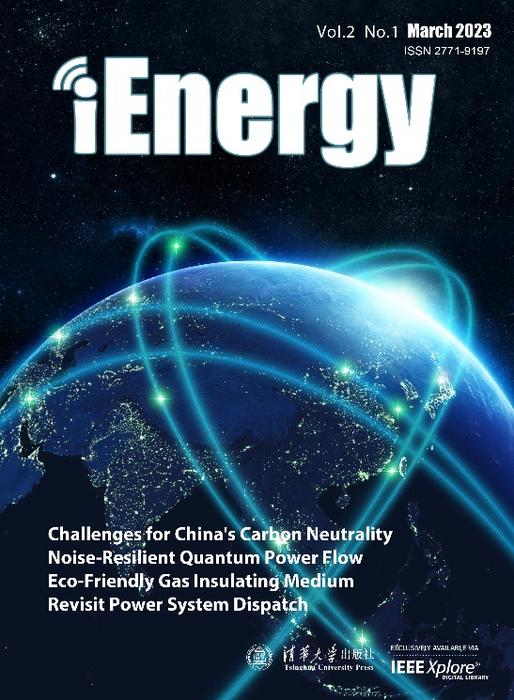Gas-insulated equipment (GIE) that utilizes the most potent greenhouse gas sulfur hexafluoride (SF6) as insulation and arc-quenching medium has been widely used in the power industry. Seeking eco-friendly insulating gas with advanced performance for next-generation SF6-free GIE is significant for the “net-zero” goal and sustainable development.
A research team led by Xiaoxing Zhang of Hubei University of Technology in China and scientists from Wuhan University, Southeast University, North China Electric Power University, Université de Toulouse, Xi’an University of Technology, Schneider Electric and South China University of Technology recently summarized the advances in Eco-friendly gas insulating medium for next-generation SF6-free equipment. The review report was published in the journal iEnergy as the cover article on March 31, 2023.
An overview of the SF6-based GIE, the emission and reduction policies of SF6 were introduced firstly to clarify the necessity of seeking eco-friendly insulating gas. “SF6 is one of the most potent greenhouse gases with a global warming potential of 25200 and an atmospheric lifetime of 3200 years. The power industry accounts for 80% of the SF6 consumption, which value reaches over 7000 tons in China. Various countries have established regulations on the use, recovery and treatment of SF6, promoting the development of eco-friendly insulating gas” said Prof. Zhang.
Basic requirements for eco-friendly gas including environmental features, insulation & arc-quenching performance, stability, material compatibility, biosafety were proposed and the main categories containing traditional gas (CO2, N2, air), Perfluorocarbons and Trifluoroiodomethane, Fluorinated-nitrile(C4F7N), Fluorinated-ketones(C5F10O, C6F12O), Hydrofluro-Olefins (HFO-1234ze(E), HFO-1336mzz(E)) were introduced. The molecular design method of eco-friendly gas was also provided.
Recent progress of various eco-friendly insulating gas in terms of dielectric insulation (in terms of AC/DC breakdown, LI breakdown, partial discharge, surface flashover), arc-quenching (in terms of particle compositions, thermodynamic properties, transport coefficients, radiation coefficients, post-arc dielectric breakdown properties), stability and decomposition (in terms of thermal, discharge stability, decomposition mechanism), materials compatibility (in terms of metal, epoxy resin, elastomer, Adsorbent), biosafety (in terms of LC50, target organ toxicity, by-products toxicity) were highlighted.
Besides, the latest application of eco-friendly insulating gas in medium-voltage (MV), high-voltage (HV) scenarios as well as relevant maintenance-related technologies were summarized. “The C4F7N/CO2, C5F10O/air based gas insulated switchgear, gas insulated transmission line, ring main units, etc. have been developed by GE, ABB since 2016. The other fluorinated-free technology roadmap using technical air combined with vacuum interruption also have been focused.” Said Prof. Zhang.
Although substantial efforts have been made in the field, several significant challenges remain that call for more solutions to achieve the next-generation SF6-free GIE in the future. The improvement of stability, interruption capacity, material compatibility is highly desired. The SF6 control and recycling, insulation coordination, scientific management of PFAS, etc. will hopefully steer the development of eco-friendly insulating gas and GIE.
Prof. Zhang is currently the Dean of School of Electrical and Electronic Engineering, Hubei University of Technology. His research focuses on high voltage engineering and low-carbon electrical materials, including eco-friendly gas, SF6 disposal and resource conversion, degradable dielectric materials. He received the National Award for Technological Invention in 2014 and the Cheungkong Scholars Program in 2020.
iEnergy, has multiple meanings, intelligent energy, innovation for energy, internet of energy, and electrical energy due to “i” is the symbol of current. iEnergy, publishing quarterly, is a cross disciplinary journal aimed at disseminating frontiers of technologies and solutions of power and energy. The journal publishes original research on exploring all aspects of power and energy, including any kind of technologies and applications from power generation, transmission, distribution, to conversion, utilization, and storage. iEnergy provides a platform for delivering cutting-edge advancements of sciences and technologies for the future-generation power and energy systems.
